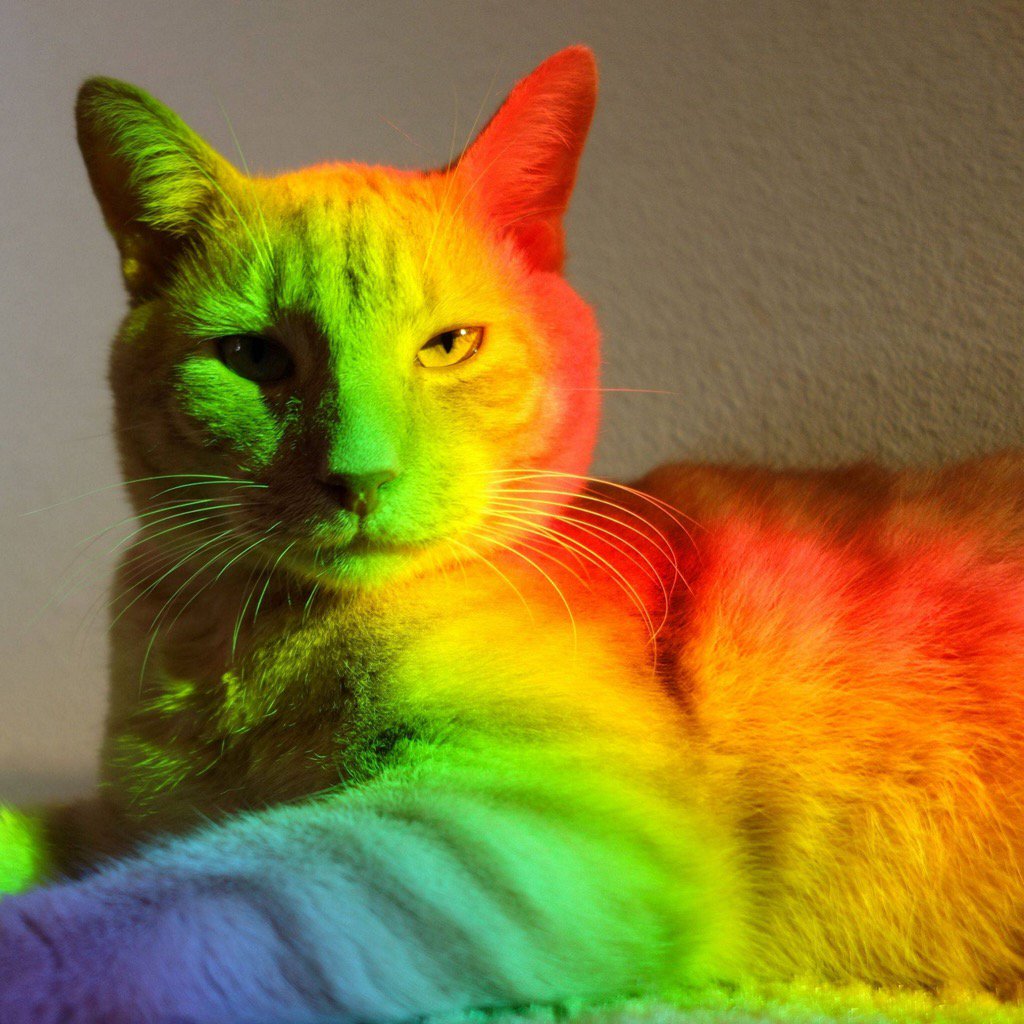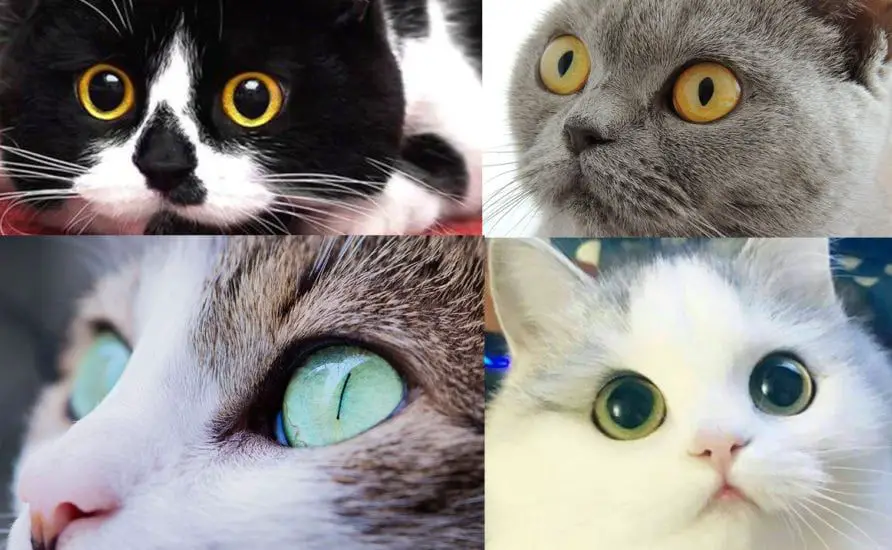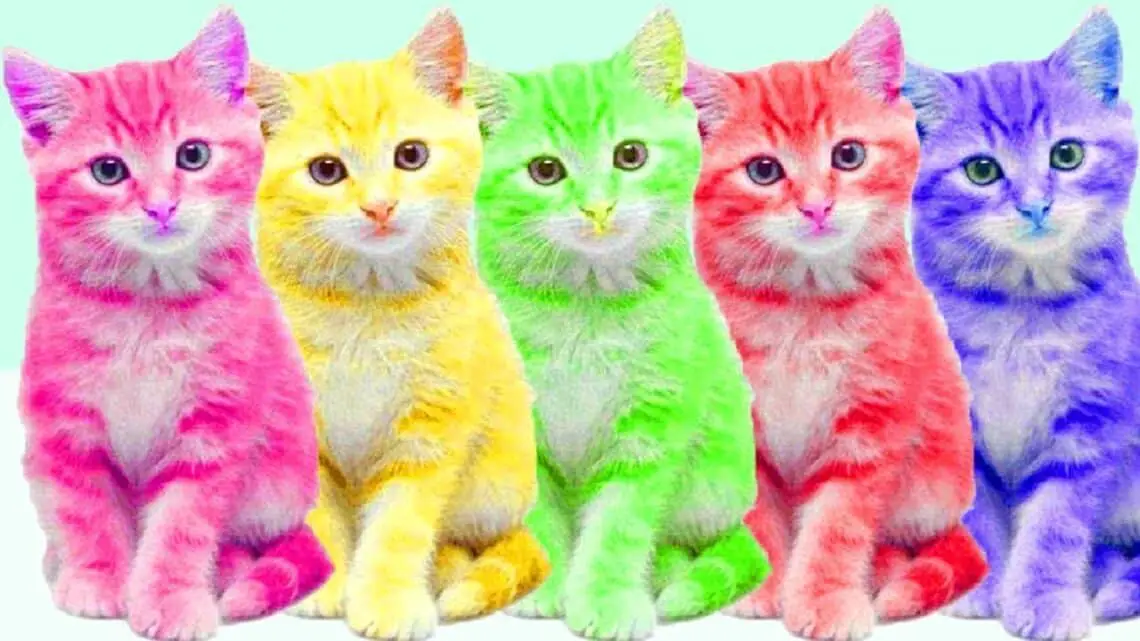Introduction
What Colors Do Cats Like: Cats are fascinating creatures that have captivated humans for centuries. From their graceful movements to their independent nature, cats have a unique charm that makes them beloved pets and companions. One aspect of cats that often intrigues people is their preference for certain colors. Many cat owners wonder, “”What colors do cats like?”” In this article, we will explore the fascinating world of feline color preferences and delve into the reasons behind them.
Colors play a significant role in our lives, influencing our moods, emotions, and even our behavior. It is no surprise that cats, with their keen senses, are also affected by cat colors in various ways. While cats are not able to see the full spectrum of colors like humans do, they still have a range of color vision that allows them to perceive certain hues and shades.
Research suggests that cats have dichromatic vision, meaning they can see a limited range of colors compared to humans’ trichromatic vision. Cats primarily see the world in shades of blue and green, with reds and pinks appearing as a variation of gray. This difference in color perception is due to the presence of specialized cells called cones in the retina, which are responsible for color vision.
When it comes to color preferences, cats are known to be attracted to certain shades and patterns. For example, many cats are drawn to colors that resemble their natural surroundings, such as earthy tones like brown and green. This preference may be rooted in their instinctual need to blend in with their environment and remain camouflaged while hunting or seeking shelter.

What is a cat’s favorite color?
Most felines tend to like blue the best. This is due to the fact that this is the color they see most clearly. The rest of the world has a dull gray tint to it. Think of what a colorized picture looks like when they use a pop of color in a black and white photo for dramatic effect.
A cat’s favorite color is not something that can be determined with certainty as cats do not perceive colors in the same way humans do. While humans have trichromatic vision, meaning they can see a wide range of colors, cats have dichromatic vision, which means they see a more limited range of colors.
Cats primarily see the world in shades of blue and green, with some ability to perceive yellow and red. This is because they have fewer color receptors in their eyes compared to humans. The color receptors in a cat’s eyes are called cones, and they are responsible for detecting different wavelengths of light. Humans have three types of cones, while cats only have two.
Despite their limited color vision, cats have excellent night vision and are able to see well in low light conditions. This is due to another type of receptor in their eyes called rods, which are highly sensitive to light. Cats also have a reflective layer behind their retinas called the tapetum lucidum, which enhances their night vision by reflecting light back through the retina.
While cats may not have a favorite color in the same way humans do, they are attracted to certain colors and patterns. For example, many cats are drawn to toys or objects that are brightly colored or have contrasting patterns. This is because cats are instinctively attracted to movement and objects that resemble prey.
Additionally, some studies have suggested that cats may have a preference for certain colors. For example, one study found that cats showed a preference for blue and yellow colors, while another study found that cats were more attracted to red and green colors. However, more research is needed to fully understand how cats perceive and respond to different colors.
What colors make cats happy?
Blue and violet are the most calming colors to cats. These colors can actually help reduce stress in your cat. They are the preferred shades in veterinary offices because of how cats react to them. If the walls were painted in a stark white or bland gray, the room would seem abrasive to your feline friend.
Cats are known for their independent and mysterious nature. They have their own preferences and personalities, and their happiness can be influenced by various factors. One such factor is the color of their surroundings. While cats may not have the same color perception as humans, certain colors can still have an impact on their mood and overall well-being.
One color that is often associated with happiness in cats is green. Green is the color of nature and is often associated with feelings of calmness and tranquility. Cats are natural hunters, and the color green may remind them of the outdoors and their instinctual need to explore and hunt. Additionally, green is a color that is easy on the eyes and can create a soothing environment for cats.
Another color that can make cats happy is blue. Blue is often associated with feelings of relaxation and serenity. It is a color that is commonly found in nature, such as the sky and the ocean. Cats may find the color blue to be calming and comforting, especially if they have a view of the outdoors or if their surroundings incorporate shades of blue.
Yellow is another color that can have a positive impact on cats. Yellow is often associated with warmth and happiness. It is a bright and cheerful color that can create a welcoming and uplifting environment. Cats may be drawn to the color yellow, as it can evoke feelings of joy and contentment.
It is important to note that every cat is unique and may have different preferences when it comes to colors. Some cats may be more responsive to certain colors, while others may not show any particular preference. It is always a good idea to observe your cat’s behavior and reactions to different colors to determine what makes them happy.
What colors do cats see the best?
The answer is: cats can recognize shades in the grey, blue, and green color palette. Especially cats are masters in the grey undertones. It is evolutionarily reasoned grey is the main color of their favorite meal- rodents. Cats see the best grey, green and blue colors.
Cats have long been known for their keen sense of sight, especially when it comes to hunting prey. But have you ever wondered what colors cats see the best? It turns out that cats have a unique visual system that allows them to see certain colors more vividly than others.
Unlike humans, who have three types of color receptors in their eyes (red, green, and blue), cats only have two types of color receptors (blue and green). This means that cats are not able to see the full spectrum of colors that humans can. However, this doesn’t mean that cats see the world in black and white.
While cats may not be able to see the same range of colors as humans, they are still able to see a variety of colors. Cats are particularly sensitive to shades of blue and green, as these colors stimulate their two types of color receptors. This means that cats are more likely to see these colors as more vibrant and intense compared to other colors.
Interestingly, cats are also able to see ultraviolet (UV) light, which is invisible to the human eye. This ability allows cats to see certain patterns and markings that are not visible to humans. For example, cats can see the UV markings on flowers, which may help them locate nectar-rich plants.
So, while cats may not see the world in the same way that humans do, they still have a unique and fascinating visual system. Their ability to see certain colors more vividly, as well as their ability to see UV light, gives them a different perspective on the world around them.
What colour are the friendliest cats?
Gray cats had the highest score for being as shy, aloof and intolerant, while orange cats had the highest scores for being trainable, friendly and calm. Tabbies the highest for bold and active, tricolor cats for stubborn, and bicolor cats for tolerant.
When it comes to cats, their personalities can vary greatly from one individual to another. Some cats are known for being friendly and sociable, while others may be more aloof and independent. However, it is important to note that a cat’s color does not necessarily determine its friendliness.
There is a common misconception that certain cat colors are more friendly than others. For example, some people believe that orange or tabby cats are the friendliest, while black cats are considered to be more mysterious or even unlucky. However, these beliefs are purely based on superstitions and stereotypes, rather than any scientific evidence.
It is important to remember that a cat’s personality is influenced by a variety of factors, including genetics, early socialization, and individual experiences. While some cats may naturally have a more outgoing and friendly disposition, others may be more reserved or shy. This can be true regardless of their color.
Furthermore, it is worth noting that a cat’s behavior can also be influenced by how it is treated and cared for by its owners. Cats that receive love, attention, and positive reinforcement are more likely to be friendly and sociable, regardless of their color.
Ultimately, the friendliness of a cat is not determined by its color, but rather by its individual personality and the care it receives. It is important to approach each cat as an individual and not make assumptions based on stereotypes or superstitions. By providing a loving and nurturing environment, any cat can become a friendly and affectionate companion.
What color is a cat’s attitude?
Gray cats had the highest score for being as shy, aloof and intolerant, while orange cats had the highest scores for being trainable, friendly and calm. Tabbies the highest for bold and active, tricolor cats for stubborn, and bicolor cats for tolerant.
A cat’s attitude cannot be defined by a single color as it is influenced by various factors such as its mood, personality, and environment. However, certain colors are often associated with specific attitudes or traits commonly observed in cats.
Black: Black cats are often associated with mystery and independence. They are known to be confident, strong-willed, and sometimes even a bit aloof. Their dark color adds to their enigmatic aura, making them appear more mysterious and intriguing.
White: White cats are often seen as symbols of purity and innocence. They are known to be gentle, calm, and peaceful. Their pristine appearance and serene demeanor make them popular choices for those seeking a more tranquil companion.
Orange: Orange cats are often described as friendly, outgoing, and sociable. They are known for their playful and affectionate nature. Their vibrant color is believed to reflect their energetic and lively personalities.
Gray: Gray cats are often associated with a more laid-back and relaxed attitude. They are known to be easygoing, adaptable, and independent. Their neutral color is often seen as a reflection of their calm and composed nature.
Calico: Calico cats are known for their unique coat pattern, which consists of a combination of white, black, and orange patches. They are often described as sassy, feisty, and unpredictable. Their colorful appearance is believed to reflect their vibrant and spirited personalities.
It is important to note that while certain colors may be associated with specific attitudes or traits, each cat is an individual with its own unique personality. Factors such as upbringing, socialization, and experiences also play a significant role in shaping a cat’s attitude. Therefore, it is essential to consider the cat as a whole rather than solely relying on its color to determine its attitude.
Cats do not have a specific preference for colors. Unlike humans, cats do not see the world in the same way we do. They have a limited color vision and see primarily in shades of blue and green. This means that they may not perceive colors in the same way we do, and their preferences are more likely to be based on other factors such as texture, movement, and scent.
However, it is worth noting that cats are known to be attracted to certain colors, particularly those that mimic the colors of their natural prey. For example, cats are often drawn to toys or objects that are red or have red accents, as this color resembles the blood of injured prey. Similarly, cats may be attracted to objects that are yellow or have yellow accents, as this color resembles the feathers of birds, which are a common prey for cats.
Which colors do cats tend to be attracted to?
Cats are known to be attracted to a variety of colors, but there are certain shades that tend to catch their attention more than others. One color that cats are particularly drawn to is red. This vibrant hue is believed to stimulate their hunting instincts, as it resembles the color of prey such as birds or rodents. Additionally, cats are often attracted to blue and purple colors. These cool tones are thought to be calming and soothing for felines, making them more appealing to cats.
Another color that cats are attracted to is yellow. This bright and sunny shade is known to grab their attention and can be especially enticing when combined with movement, such as a fluttering toy or a dangling string. Cats also tend to be attracted to green colors, which may be due to their association with nature and the outdoors. Lastly, cats are often intrigued by white and black colors. These contrasting shades can create a strong visual impact and pique a cat’s curiosity.
Are there specific colors that cats show a preference for?
When it comes to the specific colors that cats show a preference for, there is no definitive answer. Cats, like humans, have individual preferences and can be attracted to a variety of colors. However, there are certain colors that are generally believed to be more appealing to cats based on their natural instincts and visual abilities.
One color that cats are often drawn to is red. This is because cats have a higher number of red-sensitive cones in their eyes compared to other animals. Red objects may appear more vibrant and stimulating to cats, which can catch their attention and pique their curiosity. Additionally, red is often associated with movement and prey, which can trigger a hunting instinct in cats.
Another color that cats may show a preference for is blue. Blue objects can appear more soothing and calming to cats, which can be particularly beneficial in creating a relaxing environment for them. Blue is also commonly associated with water, and cats are known to have a natural attraction to water sources. Therefore, incorporating blue elements in their surroundings, such as a blue water bowl or a blue toy, may enhance their interest and engagement.
Do cats have a particular liking for certain colors?
Yes, cats do have a particular liking for certain colors. While cats are not able to see colors as vividly as humans do, they can still distinguish between different shades and have preferences for certain colors. Research has shown that cats are most attracted to colors in the blue and green spectrum. These colors are believed to be more soothing and calming for cats, which is why you often see cat toys and accessories in shades of blue and green.
Additionally, cats are known to be attracted to colors that contrast with their surroundings. For example, if a cat has a predominantly white coat, it may be more drawn to darker colors such as black or navy blue. This is because the contrast makes the colors stand out more to the cat’s eyes. Similarly, cats with darker coats may be more attracted to lighter colors like white or pastels.
Can you identify the colors that cats are naturally drawn to?
Yes, research has shown that cats are naturally drawn to certain colors. Cats have a keen sense of vision, although it is not as developed as that of humans. They are more sensitive to motion and have a limited ability to distinguish between colors. However, studies have found that cats are particularly attracted to colors in the blue and green spectrum. These colors are believed to stimulate their visual receptors and catch their attention.
Furthermore, cats are known to have a preference for colors that resemble their natural surroundings. This is because cats are instinctively wired to blend in with their environment for hunting and survival purposes. Therefore, colors such as brown, gray, and earth tones are often appealing to cats. Additionally, cats are also attracted to colors that provide contrast, such as black and white. These colors stand out against their surroundings and can pique their curiosity.

Conclusion
The question of what colors cats like is an interesting one. While cats are not able to see colors in the same way that humans do, they still have preferences when it comes to certain shades and patterns. It is important to note that individual cats may have different preferences, so it is always best to observe and interact with your own cat to determine what colors they may be drawn to.
Research has shown that cats are more attracted to colors that are similar to their natural environment. This includes shades of green, brown, and gray. These colors mimic the colors of grass, trees, and rocks, which are common in a cat’s natural habitat. Cats may also be drawn to colors that provide contrast, such as black and white. These colors stand out against their surroundings and can catch a cat’s attention.
Additionally, cats may be more interested in colors that are associated with positive experiences. For example, if a cat has had positive interactions with a person wearing a certain color, they may be more likely to be attracted to that color in the future. Similarly, if a cat has had negative experiences with a certain color, they may be less likely to be drawn to it.
While cats may not see colors in the same way that humans do, they still have preferences when it comes to certain shades and patterns. Cats are more attracted to colors that mimic their natural environment, such as shades of green, brown, and gray. They may also be drawn to colors that provide contrast, such as black and white. Additionally, cats may be more interested in colors that are associated with positive experiences. Overall, it is important to observe and interact with your own cat to determine what colors they may be drawn to.





No Comments